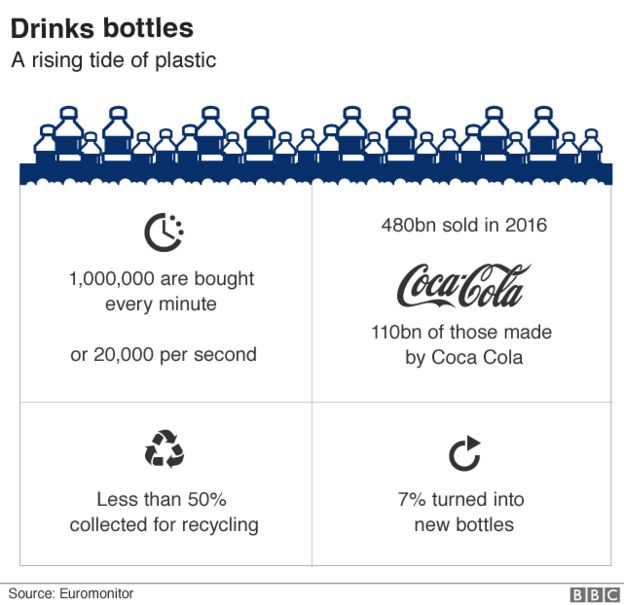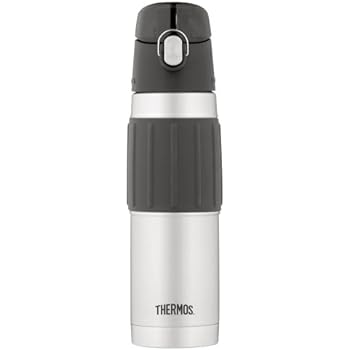Just a bit of food for thought, but personally i'm going back onto alloy bottles for my family fill with water that has only gone through my Berkfield filter.
http://www.bbc.co.uk/news/science-environment-43389031
Bottled water: WHO launches plastic health review
By David Shukman Science editor

Media captionResearch led by journalism organisation Orb Media discovered an average of 10 plastic particles per litre
The World Health Organization is to launch a review into the potential risks of plastic in drinking water.
It will assess the latest research into the spread and impact of so-called microplastics - particles that are small enough to be ingested.
It comes after journalism organisation Orb Media found plastic particles in many major brands of bottled water.
There is no evidence that microplastics can undermine human health but the WHO wants to assess the state of knowledge.
Bruce Gordon, coordinator of the WHO’s global work on water and sanitation, told BBC News that the key question was whether a lifetime of eating or drinking particles of plastic could have an effect.
"When we think about the composition of the plastic, whether there might be toxins in it, to what extent they might carry harmful constituents, what actually the particles might do in the body – there's just not the research there to tell us.
"We normally have a 'safe' limit but to have a safe limit, to define that, we need to understand if these things are dangerous, and if they occur in water at concentrations that are dangerous."
Mr Gordon said that he did not want to alarm anyone, and also emphasised that a far greater waterborne threat comes in countries where supplies can be contaminated with sewage.
But he said he recognised that people hearing about the presence of microplastics in their drinking water would turn to the WHO for advice.
"The public are obviously going to be concerned about whether this is going to make them sick in the short term and the long term."
The WHO initiative is partly in response to a study that screened more than 250 bottles of water from 11 different brands bought in nine countries - the largest investigation of its kind.
The tests were carried out at the State University of New York in Fredonia as part of a project involving original research and reporting by the US-based journalism organisation Orb Media.
Using a dye called Nile Red, which binds to free floating pieces of plastic, the university's Prof Sherri Mason found an average of 10 plastic particles per litre of water, each larger than the size of a human hair.
Smaller particles assumed to be plastic but not positively identified were found as well - an average of 314 per litre.
Of all the bottles tested, 17 were found to have no particles at all while many had counts ranging into the hundreds or even thousands, with big differences within brands and even the same pack of bottles.
We contacted the companies behind the brands and most responded, standing by the quality and safety of their products.
A few questioned why the study’s results were so much higher than their own internal research or pointed out that there are no regulations on microplastics or agreed methods for testing for them.
The study comes on top of earlier investigations that have found microplastics in tap water, beer, sea salt and fish, and Prof Mason told me that researchers need to be able to answer the pressing question of whether microplastics can be harmful.
"What we do know is that some of these particles are big enough that, once ingested, they are probably excreted but along the way they can release chemicals that cause known human health impacts.
"Some of these particles are so incredibly small that they can actually make their way across the gastro-intestinal tract, across the lining and be carried throughout the body, and we don’t know the implications of what that means on our various organs and tissues."

The UK's Food Standards Agency said it was unlikely that the levels of microplastic reported in the bottles of water could cause harm but it added that, "it would assess any emerging information concerning microplastics in food and drink".
For Dr Stephanie Wright of the King’s College Centre for Environment and Health, the priority is to understand how much microplastic we are exposed to, and exactly what happens to it inside us.
Researchers have established that tiny particles of titanium dioxide can pass through the lining of the gut so the same might be possible with plastic, raising the question of where it would then end up.
Dr Wright told me: "The particles could stay within an immune cell in the gut lining, or be passed into our lymphatic system ending up in the lymph nodes, or there is a small potential for them to enter the blood stream and possibly accumulate in the liver.
"These are foreign hard particles which our body will obviously want to get rid of but it can’t because plastic is not degradable so that will cause harm to the local tissue.
"But at the moment we don't know."
I suggested to Michael Walker, a consultant to the Office of the UK Government Chemist and founder board member of the Food Standards Agency, that the jury was out on whether microplastics could cause harm.
He replied: "The scientific literature says that not only is the jury not yet out on this question but the jury has not yet been convened on it."
The full Orb Media report can be found at www.OrbMedia.org
http://www.bbc.co.uk/news/science-environment-43389031
Bottled water: WHO launches plastic health review
By David Shukman Science editor

Media captionResearch led by journalism organisation Orb Media discovered an average of 10 plastic particles per litre
The World Health Organization is to launch a review into the potential risks of plastic in drinking water.
It will assess the latest research into the spread and impact of so-called microplastics - particles that are small enough to be ingested.
It comes after journalism organisation Orb Media found plastic particles in many major brands of bottled water.
There is no evidence that microplastics can undermine human health but the WHO wants to assess the state of knowledge.
Bruce Gordon, coordinator of the WHO’s global work on water and sanitation, told BBC News that the key question was whether a lifetime of eating or drinking particles of plastic could have an effect.
"When we think about the composition of the plastic, whether there might be toxins in it, to what extent they might carry harmful constituents, what actually the particles might do in the body – there's just not the research there to tell us.
"We normally have a 'safe' limit but to have a safe limit, to define that, we need to understand if these things are dangerous, and if they occur in water at concentrations that are dangerous."
Mr Gordon said that he did not want to alarm anyone, and also emphasised that a far greater waterborne threat comes in countries where supplies can be contaminated with sewage.
But he said he recognised that people hearing about the presence of microplastics in their drinking water would turn to the WHO for advice.
"The public are obviously going to be concerned about whether this is going to make them sick in the short term and the long term."
The WHO initiative is partly in response to a study that screened more than 250 bottles of water from 11 different brands bought in nine countries - the largest investigation of its kind.
The tests were carried out at the State University of New York in Fredonia as part of a project involving original research and reporting by the US-based journalism organisation Orb Media.
Using a dye called Nile Red, which binds to free floating pieces of plastic, the university's Prof Sherri Mason found an average of 10 plastic particles per litre of water, each larger than the size of a human hair.
Smaller particles assumed to be plastic but not positively identified were found as well - an average of 314 per litre.
Of all the bottles tested, 17 were found to have no particles at all while many had counts ranging into the hundreds or even thousands, with big differences within brands and even the same pack of bottles.
We contacted the companies behind the brands and most responded, standing by the quality and safety of their products.
A few questioned why the study’s results were so much higher than their own internal research or pointed out that there are no regulations on microplastics or agreed methods for testing for them.
The study comes on top of earlier investigations that have found microplastics in tap water, beer, sea salt and fish, and Prof Mason told me that researchers need to be able to answer the pressing question of whether microplastics can be harmful.
"What we do know is that some of these particles are big enough that, once ingested, they are probably excreted but along the way they can release chemicals that cause known human health impacts.
"Some of these particles are so incredibly small that they can actually make their way across the gastro-intestinal tract, across the lining and be carried throughout the body, and we don’t know the implications of what that means on our various organs and tissues."

The UK's Food Standards Agency said it was unlikely that the levels of microplastic reported in the bottles of water could cause harm but it added that, "it would assess any emerging information concerning microplastics in food and drink".
For Dr Stephanie Wright of the King’s College Centre for Environment and Health, the priority is to understand how much microplastic we are exposed to, and exactly what happens to it inside us.
Researchers have established that tiny particles of titanium dioxide can pass through the lining of the gut so the same might be possible with plastic, raising the question of where it would then end up.
Dr Wright told me: "The particles could stay within an immune cell in the gut lining, or be passed into our lymphatic system ending up in the lymph nodes, or there is a small potential for them to enter the blood stream and possibly accumulate in the liver.
"These are foreign hard particles which our body will obviously want to get rid of but it can’t because plastic is not degradable so that will cause harm to the local tissue.
"But at the moment we don't know."
I suggested to Michael Walker, a consultant to the Office of the UK Government Chemist and founder board member of the Food Standards Agency, that the jury was out on whether microplastics could cause harm.
He replied: "The scientific literature says that not only is the jury not yet out on this question but the jury has not yet been convened on it."
The full Orb Media report can be found at www.OrbMedia.org
Last edited:


















































